Sensors already equip a range of tools to enhance monitoring capacity for conservation. Some of the higher bandwidth technologies, like camera traps and acoustic monitoring systems, have been essential elements of the conservation toolkit for decades, and thus have enough users that we've created dedicated WILDLABS groups to address them. But a whole range of lower bandwidth sensors beyond these core technologies are being increasingly integrated into conservation monitoring systems, and offer rich new insights into the wildlife and ecosystems we're all working to protect. As with many technologies, cost and access have historically been challenges to the adoption of new sensors, but with low-cost and open-source solutions on the rise, we're excited to see what the future of this space holds.
Getting Started with Sensors:
- Watch Shah Selbe's Tech Tutors episode on scaling FieldKit, an open-source conservation sensor toolbox, from a project to a successful conservation tech product.
- Check out our Virtual Meetup about Low-Cost, Open-Source Solutions in conservation tech, including a talk by Alasdair Davies on the Arribada Initiative's work with thermal sensors in early warning systems.
- For a more in-depth introduction, watch the first video in our datalogger mini-series: Freaklabs: How do I get started with Arduino?
In this group, you'll meet others who are using and innovating diverse sensors in their work, discuss ways to make sensors more effective & accessible for conservationists, learn about what sensors are already helping us accomplish in the field, and have the opportunity to ask and answer questions. Join this group to get started!
Header image: Emma Vogel, University of Tromsø
No showcases have been added to this group yet.
World Wide Fund for Nature/ World Wildlife Fund (WWF)

- 0 Resources
- 12 Discussions
- 15 Groups
WILDLABS
This account is managed by the WILDLABS Team. Tag us or DM whenever you need help from our community team.



- 22 Resources
- 23 Discussions
- 11 Groups
- @MichaelMaggs
- | he/him
Frontier Labs
Bioacoustics lover and director @ Frontier Labs
- 0 Resources
- 3 Discussions
- 3 Groups
- @apcxs
- | He, his, them
- 0 Resources
- 0 Discussions
- 11 Groups
Director of Icoteq Ltd, an electronics and software design consultancy developing wireless products and solutions to organisations working in the conservation, wildlife monitoring and anti-poaching sectors. Developers of the TagRanger® novel wildlife tracking products.



- 1 Resources
- 15 Discussions
- 7 Groups
- @nabilla.nuril
- | She/Her
University College London (UCL)
- 0 Resources
- 0 Discussions
- 11 Groups
University of Antwerp

- 0 Resources
- 12 Discussions
- 7 Groups
- 0 Resources
- 6 Discussions
- 3 Groups
- @IvanIoSA
- | He/Him
CTO of IoSA, the Internet of Small Animals. Creator of ProxLogs

- 0 Resources
- 5 Discussions
- 7 Groups
- @mahmudku
- | he/him/his
Mahmud Rahman is an MS student at Oregon State University, studying the risk-taking behavior of bottlenose dolphins. With experience in wildlife filmmaking, he aims to develop technologies to advance marine research
- 0 Resources
- 0 Discussions
- 3 Groups
St. Lawrence University
Professor of Biology at St. Lawrence University
- 0 Resources
- 2 Discussions
- 12 Groups
Max Planck Institute of Animal Behavior
- 0 Resources
- 2 Discussions
- 5 Groups
The Marine Innovation Lab for Leading-edge Oceanography develops hardware and software to expand the ocean observing network and for the sustainable management of natural resources. For Fall 2026, we are actively...
24 July 2025
In this case, you’ll explore how the BoutScout project is improving avian behavioural research through deep learning—without relying on images or video. By combining dataloggers, open-source hardware, and a powerful...
24 June 2025
PhD position available at the University of Konstanz in the Active Sensing Collective Group!
28 March 2025
We are hiring for a customer support / marketing specialist.
20 February 2025
Osa Conservation is launching our inaugural cohort of the ‘Susan Wojcicki Research Fellowship’ for 2025, worth up to $15,000 per awardee (award value dependent on project length and number of awards given each year)....
10 February 2025
New paper - "acoupi integrates audio recording, AI-based data processing, data management, and real-time wireless messaging into a unified and configurable framework. We demonstrate the flexibility of acoupi by...
7 February 2025
The Conservation Technology Laboratory within the Population Sustainability department is seeking two fellows for summer 2025
5 February 2025
Conservationists use tools like drones, satellites, and camera traps to monitor ecosystems and scale their impact. But new challenges like transparency, funding gaps, and engagement remain. Web 3.0 technologies offer...
28 January 2025
The worst thing a new conservation technology can do is become another maintenance burden on already stretched field teams. This meant Instant Detect 2.0 had to work perfectly from day 1. In this update, Sam Seccombe...
28 January 2025
The Zoological Society of London's Instant Detect 2.0 is the world's first affordable satellite connected camera trap system designed by conservationists, for conservationists. In this update, Sam Seccombe describes the...
21 January 2025
Over the years, a large number of developments have gone up in the area that I live in and the municipality is not doing what they should when it comes to upholding the laws that have been put in place to protect the...
20 January 2025
August 2025
event
September 2025
event
March 2026
March 2024
event
December 2023
17 Products
Recently updated products
121 Products
3 R&D Projects
84 Organisations
Recently updated products
Recently updated R&D Projects
Recently updated organisations
| Description | Activity | Replies | Groups | Updated |
|---|---|---|---|---|
| G-DiNC 2026: Global Drones in Nature Conservation Symposium & ExpoNairobi & Naivasha, Kenya | March 3–6,... |
|
Drones, AI for Conservation, Conservation Tech Training and Education, Emerging Tech, Marine Conservation, Sensors | 4 weeks 2 days ago | |
| Hi Ana,Savannah Tracking Ltd, based in Kenya, exclusively provides tracking and IT solutions for wildlife research, management and conservation projects worldwide.We offer a range... |
+4
|
Sensors | 1 month ago | |
| Yes, thanks Riley and Kim. Someone suggested WIS and I am currently in discussions with them. Their system seems especially well suited for the purpose and I am hoping it works... |
|
AI for Conservation, Emerging Tech, Sensors | 1 month 1 week ago | |
| I create ocean exploration and marine life content on YouTube, whether it be recording nautilus on BRUVs, swimming with endangered bowmouth... |
|
Acoustics, AI for Conservation, Animal Movement, Camera Traps, Citizen Science, Drones, Emerging Tech, Marine Conservation, Sensors, Sustainable Fishing Challenges, Wildlife Crime | 1 month 2 weeks ago | |
| Gina- Sounds like an interesting thesis topic! I work with bioacoustics in offshore waters and I'd be happy to have a chat and provide feedback-- feel free to message me via... |
|
Emerging Tech, Acoustics, Connectivity, Marine Conservation, Sensors | 2 months ago | |
| Hello, could you please elaborate on what the purpose of this project is? Thanks a lot :) Lukas |
|
AI for Conservation, Emerging Tech, Sensors | 2 months ago | |
| Hi, My name is Gina. I'm currently working on my Bachelor's Thesis and would like some feedback on my final concept. It is a ... |
|
Acoustics, Emerging Tech, Marine Conservation, Sensors, Women in Conservation Tech Programme (WiCT) | 2 months 1 week ago | |
| Hi CourtneyNothing off-the-shelf. A colleague is talking to e-obs about developing this capability but I don't think it's there yet. There are some Bluetooth-transmitting... |
|
Sensors | 2 months 1 week ago | |
| True, the US ecosystem is a challenging space right now, for basically all sectors. We should not let the US chaos prevent us from engaging with opportunities in other... |
|
AI for Conservation, Camera Traps, Connectivity, Drones, Emerging Tech, Ethics of Conservation Tech, Marine Conservation, Sensors | 3 months 4 weeks ago | |
| Thanks Phil - I have e-mailed you.Peter |
|
Animal Movement, Sensors | 3 months 2 weeks ago | |
| One of our goals with explorer.land is to bridge satellite data and on-the-ground perspectives — helping teams combine field updates,... |
|
AI for Conservation, Geospatial, Open Source Solutions, Sensors | 3 months 4 weeks ago | |
| Hi WILDLABS Community,I’m Simon Juma from Kenya, working on a project to track and manage Red-billed Quelea birds, which... |
|
AI for Conservation, Sensors | 4 months 4 weeks ago |
FLIR Conservation Discount Program
23 May 2019 12:00am
Environmental Management and the Raspberry Pi
21 May 2019 10:42pm
GWP Webinar Recording: Using SMART at scale for effective wildlife protection
21 May 2019 12:00am
Meet the WILDLABS TECH HUB Winners
13 May 2019 12:00am
Technology for Wildlife and the Looming Spectre of E-Waste
3 May 2019 12:00am
How IoT is being used for Australian agriculture
28 April 2019 8:43am
Suggestions or Preferences for content for this forum?
16 March 2019 3:27am
12 April 2019 12:37am
That sounds awesome. Perhaps we start with that. Perhaps discussing some case studies of IoT being used outside of wildlife conservation (ie: enviornmental monitoring, etc), some theoretical applications of IoT that can be followed up with practical discussions on the implementation, or perhaps some hands on tutorials?
I'll start looking into some content ideas and please post anything you find, want to discuss, or would be more interested to hear about.
Akiba
12 April 2019 6:12pm
Sounds great!
Starting an Open Source DataLogger Project
19 March 2019 7:04am
2 April 2019 11:00pm
and love your work MichalSmielak! Looks like a very nice design indeed.
7 April 2019 2:42am
Hi everyone.
It's still a bit early in the process but we have been working on two separate data loggers for the OpenWild toolkit. We're putting this out now so we can discuss the OpenWild tools for the virtual conference coming up on Tuesday. It's mainly to get a conversation started on an open source toolkit.
This datalogger is the one described above with all of the features except for the Grove sensor connectors. We decided that instead, we'll put Arduino compatible shield connectors and have different shields that can add support for specific applications. Here are the features for the OpenWild Datalogger 900M
- Arduino compatible but with (16 kB RAM and 128 kB Flash)
- Low power
- Solar w/rechargeable batteries
- SD card
- Real time clock (DS3231SN)
- Precision 2.5V voltage reference
- Waterproof IP65 enclosure
- 900 MHz Wireless radio (802.15.4)
- 500 mW transmit amplifier, 12 dB low noise receive amplifier
- Communication range of up to 5 km (depends on antenna & terrain)
The initial github repository can be found here. Please note it's still in a pre-release stage so software and everything else will be fleshed out as it gets closer to a 1.0 release.
@Rob+Appleby : Actually an animal-borne datalogger would be really interesting. Will check that out after these two are working and released.
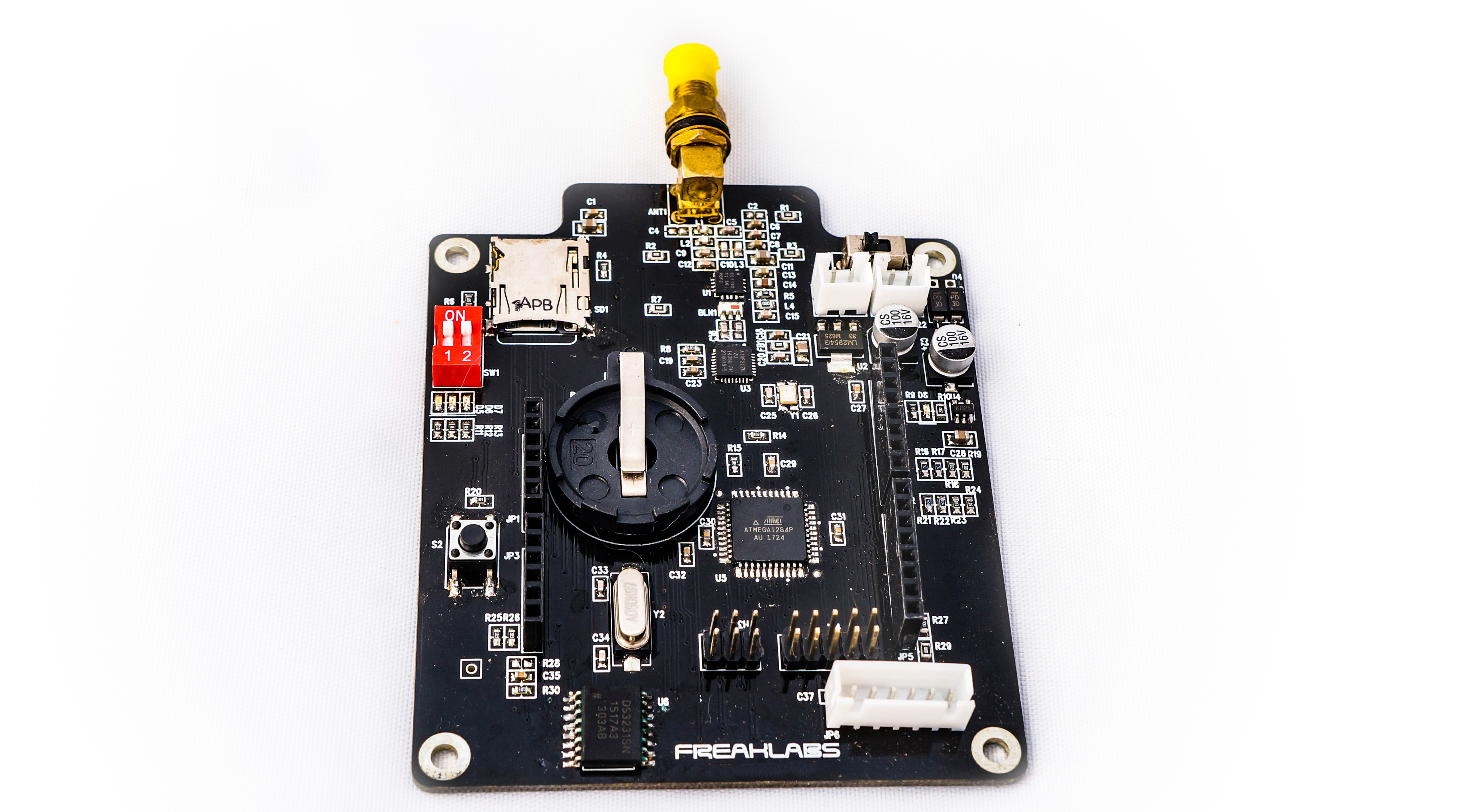




7 April 2019 3:22am
We've also put together a variation on the wireless datalogger. We've found it extremely useful for us in other projects, especially in developing countries without much communications infrastructure except for cellular. This is the OpenWild Wireless DataLogger 3G-GPS.
This can function as a standalone datalogger with a 3G connection to upload data as well as an SD card to have offline storage or backup of data. It can also be used as a gateway for other wireless sensors where it can aggregate the data from a local wireless sensor network and send the information via a 3G uplink. In this case, it will need a wireless shield (ie: 900 MHz 802.15.4 in the case of the OpenWild Datalogger 900M) to collect data from other wireless sensors.
One of the main topics we'd like to discuss along with the OpenWild toolkit is how to proceed with showing how to operate and customize these tools. This might likely be from a series of videos, tutorials, and workshops. It's nice to design all this technology, but our experience is that the most important factor is showing people how these tools can be relevant in their field of work.
But in any case, there's a lot of development effort going on at the moment and we're looking forward to putting together a base of tools specifically designed for wildlife conservation technology. It's really exciting and all of us at freaklabs and hackerfarm are interested in what's happening here.
Here is the feature set for the OpenWild Datalogger 3G/GPS (we actually need better names for everything but that will come later).
- Arduino compatible but with (16 kB RAM and 128 kB Flash)
- Low power (3G modem can be power cycled so that it can turn on only when used)
- Solar w/rechargeable batteries
- SD card
- SIM Card
- Real time clock (DS3231SN)
- Precision 2.5V voltage reference
- Waterproof IP65 enclosure
- 3G WCDMA support (SIM5320 3G module)
- Can support Americas, Europe, Asia. Need to know location to look up the frequency bands used by the country/region
- GPS support
Software will be coming soon. Things are pretty busy at FreakLabs so we mainly wanted to crank out the hardware so we have something to work with. Then the software can come along as free time pops up.






OpenEars is a fact!
4 April 2019 3:49pm
6 April 2019 4:22pm
FYI: we included instructions in English: https://github.com/SensingClues/OpenEars
camera trap sensor zones - how much is hardware and how much firmware
31 October 2016 2:48pm
1 April 2019 7:51pm
Hi Akiba,
Sure thing. An open source camera trap reference design or SoC that meets commerical specifications is, in my eyes, one of the key missing elements in the world of camera traps due to the complexity of achieving comparable performance as that of a Bushnell / Reconyx. Nobody has cracked it yet, and if you're game, that would offer real value to the camera trapping community. I'd be keen to support a move in this direction.
I supported an experimental programme of work a few years back that multiplexed the SD card, meaning anyone with an existing generic camera trap would use the modified SD and the camera would happily keep the bus, writing data / photos, but the bus would be switched on init so the previous data could be read by a third party radio or device, meaning cheap trail cameras could be modified and used and extended. A flat ribbon cable escaped the enclosure in this instance. I was also going to try and run busybox (think WiFi-SD cards) for wireless transfer but the prob was power as the SD card only received power during writes and the objective was 0 hacks - just a modified SD in a standard camera. Could still go down the firmware route, but it gets heavy supporting various different makes. A reference open design and injection moulded case would be the real answer.
Cheers,
Al
2 April 2019 2:25am
Hi Alasdair.
I think an open source camera trap design is very possible. We've looked into the Sunplus chipsets but it seems very difficult to get a reference design and reference software. The SPCA1x28 series is a low end chipset that is very inexpensive, using an 8-bit 8032 processor and handling all the images in hardware. The low cost is likely why so many trail cam manufacturers use them, but the processor is based on an Intel 8051 instruction set circa 1981 and looks closely guarded by Sunplus. What seems to be happening is that companies are selling vanilla circuit boards with standard features and the trailcam manufacturers are using the standard features available in their trailcams with no modification of firmware. On the (Sun)plus side, having an 8-bit controller with 5MP cams means it's possible to idle at very low power and then turn on and trigger the cams quickly.
We've looked at using an Allwinner chipset which is used in a lot of action cams and dashcams and modifying it into a trailcam. It's possible to run Linux and they support SD card interfaces and various cameras. It's also possible to buy just the chip so it's not tied to a platform like Raspberry Pi. This is useful because it's possible to make minimalist boards with just what's needed and also optimize it for power. An issue is that since it will be running a pretty heavy processor, it will be difficult to power optimize. Rough estimates are that at idle but full clock speed, the chip will consume around 90 mA. The Raspberry Pi Zero idles at around 80 mA for reference. Ideally, it'd be nice to get it around 1 mA.
We've also checked out using an ST32 ARM Cortex M4 chip with a parallel camera interface. These are pretty beefy processors but not Linux class like the Allwinner which is an ARM Cortex A7 class chip. Since the ST32F407 chip can run closer to bare metal (ie: no OS layer in the way), its possible to put it in very low power modes and then have it wake up. One issue though is that it doesn't have an SDRAM interface so it will cost a lot to have enough SRAM to buffer more than one image.
Another possibility we were looking at was to have an FPGA running with custom logic and have it controlled by something like an Arduino or an ARM Cortex M3. There is already ArduinoCAM devices but the FPGA code is not open source. This is also a potentially interesting possibility because it would offer a low power device which could be in sleep mode except for the PIR sensor and quickly ramp up to take pictures.
Whether we go with the Allwinner, Sunplus, ST, FPGA, or some other chip, it will probably be a big undertaking since hardware will need to be developed for the chip and system. The software will probably take the most time since custom drivers will likely need to be written as well as application software to handle the main functionality. I'm currently assuming that it will be a year-long project. But if it takes a year to come up with a design that can be useful in so many applications, it may be a small price to pay.
Let me know if you're interested to discuss it more. I will probably move this part of the thread to a separate thread since I think it's diverged from the OP topic.
Akiba
2 April 2019 3:47am
FYI, the open source camera trap part of this thread has moved here:
Workshop: Building and deploying DIY web-connected field sensors and loggers for field research and teaching
 Royal Geographic Society
Royal Geographic Society
26 March 2019 12:00am
HWC Tech Challenge: Smart Parks field update
25 March 2019 12:00am
WILDLABS Virtual Meetup: Low Cost, Open-Source Solutions
18 March 2019 12:00am
Great introduction to IoT
10 December 2015 5:13pm
14 March 2019 7:25am
The talk is really interesting and I agree that it's important to think about the bigger issues of the world and then use technology as just one of the tools to try and tackle them.
IoT Roots are Actually in Habitat Monitoring
14 March 2019 5:59am
Internet of Elephants
4 January 2016 12:01pm
28 August 2017 10:01pm
Love the name. I am doing work around sensor networks for conservation. You have grown quite the team. I am also leavine the corporate IT world as a software engineer to start a conserve/agri tech start-up. I would like to keep it as a social enterprise as well.
14 March 2019 5:56am
Will your startup be involved in sensor networks for conservation? I'm very interested. Currently we create sensor networks for developmental infrastructure and agriculture and am curious about using it for wildlife monitoring and conservation.
Welcome to the WILDLABS.NET IoT Group!
15 December 2015 7:38pm
21 December 2015 4:57pm
Hi, everyone, I'm John Waugh. I manage the climate and environment program for a small but growing consultancy, Integra LLC, based in Washington DC. Another core area for Integra is information and communications technology for development, hence my interest in the intersection between technology and biodiversity conservation. I'm convinced that there's a bright future for the Internet of Things in the area of conservation, and I look forward to working with you to build a community of practice. It would be very helpful to me to hear your thoughts about what information is most needed. Should we have a directory of experts? Of vendors of hardware and software? Or documentation of existing projects and the technologies being used? I'm sure all of these and more are in demand. I'd like to help get the ball rolling; what should our initial focus be? I'm looking forward to being in touch.
best
John
14 March 2019 5:28am
Hi everyone.
I'm Akiba and I'm an engineer by trade specializing in wireless sensor networks and communications. I generally work with groups like World Bank on technology for development and we are working with UNESCO and other organizations to put on an ICT4D (Information and Communications Technology For Development) conference in Japan later this year.
I've also started and run a communal farm which houses both farmers and techies and as the farm is expanding, we have found that we've been given a forest and part of a mountain to manage along with all its inhabitants. We are planning animal surveys and will also be studying very hard on forestry management. Wildlife conservation has been an interest of mine for a while and I'm looking forward to working and collaborating with people on WildLabs in that realm.
Akiba
Update on Arribada's Low Cost Open Source Sea Turtle Tag
12 March 2019 12:00am
#Tech4Wildlife Photo Challenge: Our Favourites from 2019
3 March 2019 12:00am
Arribada Initiative Update: Testing our prototype thermal cameras with elephants in India
1 March 2019 12:00am
Bioacoustics for Ecologists: Hardware, Survey Design and Data Analysis
 PR Statistics
PR Statistics
25 February 2019 12:00am
expanding the range of temperature pittags
13 February 2019 12:31pm
ESP32 capacitive sensing with birds
24 January 2019 2:01am
7 February 2019 2:40pm
Hi Ted,
I don't have experience with that chip either but this sounds like an interesting idea. But zooming out a bit, may I ask what PIT reader are you using?
Thanks,
-harold
7 February 2019 5:21pm
Hi Harold
The existing boarsds use an EM4095 chip. The boards are a 2010 design, done by our department of conservation.
I was thinking of canibilising the old boards - to save costs.
Ted
8 February 2019 5:07am
Hi Ted,
This is all very interesting. The solution you describe seems eminently doable and in fact quite cheap. So doable and cheap that it may behoove one to also ask what the higher level vision is, in order to further constrain the solution.
For instance is there a wider need for this kind of monitoring (e.g. other birds or animals, other localities); or perhaps a need to generate greater outreach or involve new volunteers.
Thanks,
-harold
OpenCollar for wildlife monitoring launches at The Things Conference
6 February 2019 12:00am
FLIR and World Wildlife Fund Announce Effort to Combat Rhino Poaching in Kenya
18 January 2019 12:00am
The Ecosulis Rewilding Tech Challenge
14 January 2019 12:00am
HWC Tech Challenge Update: Testing our prototype thermal cameras in the Arctic
9 January 2019 12:00am
31 March 2023 1:24pm
can we detect gillnets in turbid water?
27 November 2018 4:12pm
4 December 2018 2:55am
Hi Aurelie,
I do some work in underwater robotics and it's a tough problem! Maybe there is a way around the problem instead of through. May I ask, is the goal specifically to map where the nets are within a certain stretch of river, or to be able to ensure there are no nets wihin the area, or...?
Thanks,
-harold
4 December 2018 9:01am
Yes, I agree it's a tough problem - i'm certainly stumped ;)
but thanks so much for your reply and counter question - the goal is to find these gillnets and remove them...and we don't want to be pulling up every net and buoy...
Monitoring Ecosystems through Sound: The Present and Future of Passive Acoustics
 Ella Browning
and 1 more
Ella Browning
and 1 more
4 December 2018 12:00am
WILDLABS Virtual Meetup: Big Data in Conservation
27 November 2018 12:00am




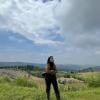
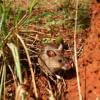



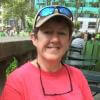





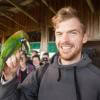











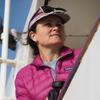























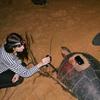





9 April 2019 6:00pm
Hey Akiba,
It would be great to have a conversation about what could be done in the field with IoT systems beyond virtual fencing and other current systems being implemented in conservation. Cases are great here but thinking beyond of what's the need and where could some creative thinking be applied to solve conservation problems. Thanks for getting this going!
Vance